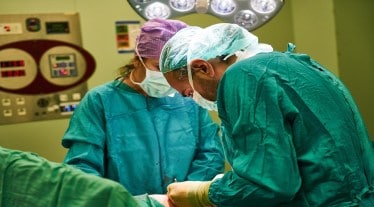World Preeclampsia Day: Every year on 22 May, World Preeclampsia Day is observed to raise awareness preeclampsia which is one of the leading causes of maternal and infant death across the world.
According to a study published in the Science Direct, the incidence of preeclampsia is estimated to be seven times higher in developing countries as compared to the developed countries.
As per the report of India’s third National Family Health Survey (NFHS-3, 2005-06), which was based on self-reported symptoms suggestive of preeclampsia and eclampsia by women who had a live birth in the five years preceding the survey, the incidence of preeclampsia and eclampsia in India might be higher (∼28% and 7.4–11.3% respectively) as compared to its incidence worldwide.
What is Preeclampsia?
Preeclampsia is a potentially dangerous complication during pregnancy that is often characterised by high blood pressure. According to Mayo Clinic, other than high blood, preeclampsia is also characterised by high levels of protein in urine that indicate kidney damage (proteinuria), or other signs of organ damage.
Preeclampsia usually begins at after 20 weeks of pregnancy in women whose blood pressure had previously been in the standard range. If preeclampsia is left untreated, it can lead to lead to serious — even fatal — complications for both the mother and baby.
What are the symptoms of Preeclampsia?
Although the defining symptoms of Preeclampsia is high blood pressure, proteinuria, some people may have no noticeable symptoms. Usually, the first sign of preeclampsia are often detected during prenatal examination.
Other symptoms of Preeclampsia include:
- Excess protein in urine (proteinuria) or other signs of kidney problems
- Decreased levels of platelets in blood (thrombocytopenia)
- Increased liver enzymes that indicate liver problems
- Severe headaches
- Changes in vision, including temporary loss of vision, blurred vision or light sensitivity
- Shortness of breath, caused by fluid in the lungs
- Pain in the upper belly, usually under the ribs on the right side
- Nausea or vomiting
According to Mayo Clinic, sudden weight gain or a sudden appearance of edema — particularly in your face and hands — may be a sign of preeclampsia.
What are the causes of Preeclampsia?
The exact cause of Preeclampsia is still not known. However, several studies suggest that Preeclampsia is believed to come from an issue with the health of the placenta.
How Preeclampsia is treated?
Usually, the treatment depends on how severe your preeclampsia is and how far along you are in pregnancy. If the pregnancy is close to full term, the baby will be delivered early.
You can still have a vaginal delivery, but in certain instances, a Cesarean delivery (C-section) is recommended. As, it is serious condition, awareness and timely visits can help in preventing and managing pre-eclampsia.
